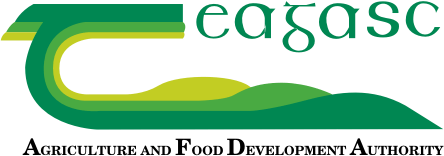09 July 2024
Budget and take action to secure fodder stocks

The results and key advisory messages arising from the Teagasc June Fodder Survey were presented to the National Fodder and Food Security Committee (NFFSC) on Monday, July 8.
The committee met to discuss the current situation and outlook for tillage crops and grassland, and to hear the latest estimate of fodder reserves across Ireland ahead of the coming winter period. The meeting also heard from Teagasc specialists and from farmer and industry representatives on the outlook for tillage crops, straw availability, grass growth and actions being taken by farmers.
Tillage Crop Update
Shay Phelan, Teagasc Crops Specialist, provided an update on the tillage crop situation. Despite the challenging weather conditions this year to date, winter barley harvest is set to begin within the next week.
Winter barley and wheat crops are showing significant variability, making yield predictions difficult at this point. Spring crops are expected to perform better than last year. However, the potential risks and challenges of a late harvesting season, following the late spring sowing, remain in place that could affect the yield and quality of both grain and straw.
The overall outlook for straw availability is positive compared to 2023. Straw yields are expected to be better in 2024. However, given the challenges seen last year and the very low level of straw stocks carried over, livestock farmers are advised to book straw supplies early with tillage farmers to secure supply in good time.
Grassland and Fodder Survey Results
Michael O’Donovan, from the Teagasc Grassland Research Department, presented grass growth data based on PastureBase Ireland grass growth and utilisation figures. Grass growth has reduced by approximately 10% so far in 2024 due to suboptimal weather conditions. However, this situation has improved in recent weeks.
Slurry and chemical nitrogen applications are getting back up to date having been behind normal levels earlier in the year. However, there is a need to optimise fertiliser use, including nitrogen (N), phosphorus (P), potassium (K), sulphur (S), lime and organic fertilisers, for the remainder of the year to ensure grass production.
Farmers are urged to contact their Teagasc or private advisor to complete a Nutrient Management Plan. This will ensure that they have correctly assessed fertiliser N and P allowances to facilitate appropriate fertiliser applications. Now is the time to take advantage of grass growth opportunities.
Joe Patton, Head of Dairy Knowledge Transfer at Teagasc, presented the results of the Teagasc June 2024 Fodder Survey, which included valid responses from 498 farms across the country. The survey revealed that fodder stocks after the first cut stand at 60% of requirements for dairy farms and 64% for drystock farms, against target levels of 70% and 77%, respectively, for this stage of the year. Approximately 25-30% of farms in both sectors report significant deficits exceeding 10%.
“The data indicates an emerging winter feed deficit that necessitates immediate action on affected farms,” said Joe Patton, Head of Dairy Knowledge Transfer at Teagasc. “Farmers need to plan for third cuts and secure additional feed based on their own fodder budgets.”
Key Recommendations and Advisory Messages
In summing up the meeting, Mike Magan, Chairman of the NFFSC, highlighted that: “Proper planning and early action are vital to mitigate risks and secure fodder supplies.” He particularly highlighted the key advisory messages for all farmers:
- Assess winter feed requirements and stocks: Calculate livestock numbers and demand versus current fodder stocks to create an accurate fodder budget.
- Optimise fertiliser use: Review year-to-date fertiliser usage and plan applications of organic and chemical fertilisers, including nitrogen (N), phosphorus (P), potassium (K), sulphur (S), and lime, for the remainder of the year.
- Plan for securing additional fodder: Maximise fodder production through second and third cuts, and source additional fodder through renting grassland and/or sourcing forage crops.
- Book straw supplies early: Due to potential late harvesting issues, early booking of straw supplies is recommended to ensure availability.
Comments from the NFFSC members also emphasised the importance of farmers engaging with advisors and financial institutions to prepare comprehensive cash flow budgets to identify potential financial shortfalls and take pre-emptive measures to address them.
The NFFSC meeting concluded with a call to action for the industry and for farmers to stay vigilant and proactive in managing fodder stocks and planning for the winter ahead.
Summarising the meeting, Mike Magan reiterated the fodder survey outcome and advice saying: “While reduced pasture growth has resulted in a current projected fodder deficit, pasture growth has returned to more normal levels in recent weeks.
“Actions taken by farmers over the next two months can close the fodder gap significantly. These include appropriate fertiliser application, harvesting second cuts in time and to plan for third cut where needed, and taking opportunities to cull non-productive stock in good time. Actions taken early within the farm gate will be most cost-effective. When those steps have been taken, secure external forage sources if needed.”
For further information, farmers are encouraged to contact their local Teagasc advisor or visit the Teagasc website for detailed guidance and support.
The presentations, including the fodder survey results, are available here.
